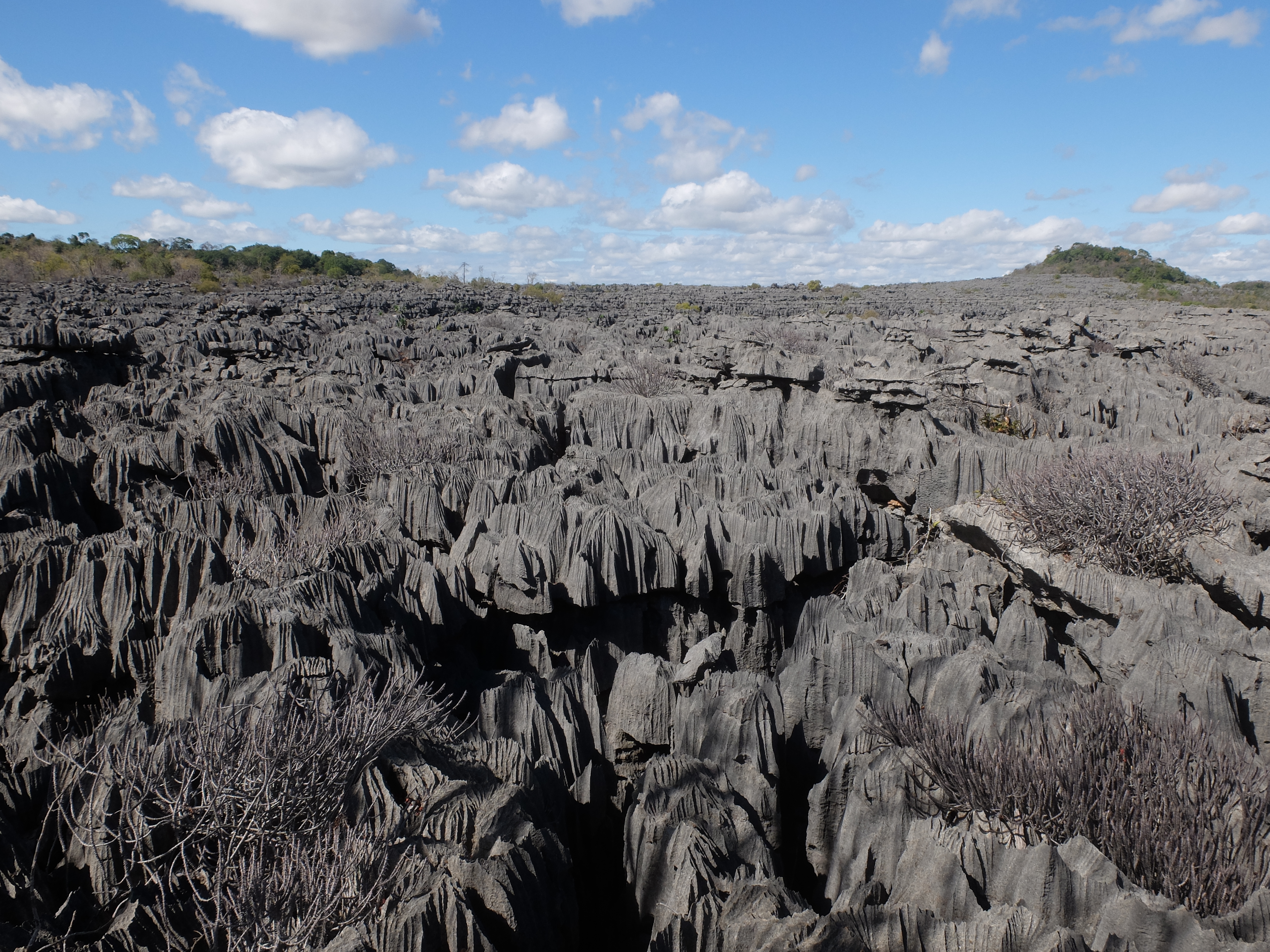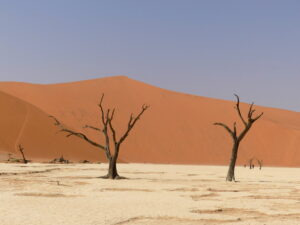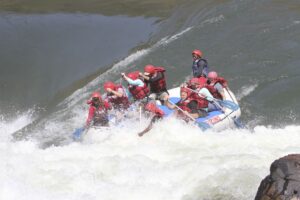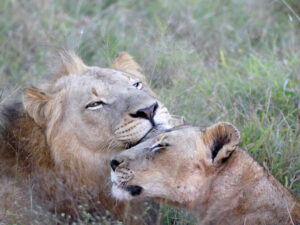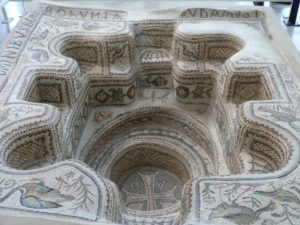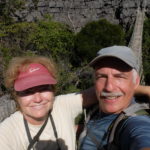
We’ve frequently seen the shape-shifting nature of both limestone and lava rock, the one deposited by the sea and compressed into stone, the other spewed from deep undergound and cooled into rock. What is now viewable of these – the striking formations, patterns, beautiful colors and such – has resulted from interactions with water flow, wind, varied minerals, etc. in the long reach of erosive geologic time.

At Ankarana National Park in N. Madagascar and at Bemaraha in the west, the wildlife of lemurs and birds and reptiles offers a similar attraction as other parks here, yet the landscape is especially appealing, an area of unusual limestone formations of a sort we’ve only seen in this country.

The most striking feature here is the strangely eroded limestone plain known locally as Tsingy, or literally ‘no barefeet”. Slate-colored ribbons and furrows have been scored vertically by acidic rain and other erosive forces, and seemingly whipped like icing into very sharp peaks.

Some of these peaks have separated from their foundations and remained balanced atop or have fallen into the canyons. Around the edges of the huge plain and in stray spots where they can gain foothold, succulent plants still grow – a striking green contrast to the spiky grey, matched by the vivid blue of the dry skies.
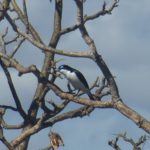
We had to be careful stepping across the tsingy, even on the few somewhat worn tracks though them. You want to keep your balance when razor ridges threaten, and we found we were pretty good at doing so. Thè main route took us to a wobbly suspension bridge (un par un, the sign cautioned) over quite a deep furrow in the lava, and then to a few narrow passageways deep in the grey froth.

Some weeks later, at Bemaraha, we did two challenging hikes into and on top of the canyons, caves and spiky peaks of the tsingy formations there. We balanced on footholds hammered into the rock, shaky platforms and narrow walkways. We wriggled through the narrows of caves and deep tsingy walls.
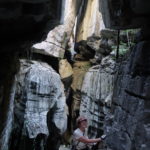
At Ankarana, we stayed on the surface. At Bemaraha, we explored the breadth and depth of the eroded limestone. Challenging, but on the main routes hardly the arduous experience we had expected.
In both parks, we were glad we did the treks early, as the sun was scorching in this dry time, when the leaves pretty much disappear from the trees. In the wet season, water would just disappear between the ridges anyway, trickling down the scratched spikes.
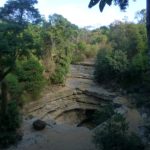
At Ankarana, the creeks and rivers swell up quickly across the limestone floor in the valley near the tsingy. Three flow together into a strangely striated sinkhole, filling it completely at times and with enough power to uproot trees. The upper part of the sinkhole mouth looks like an ancient theater, for the limestone has broken into tiers of unnaturally straight cut benches. The water funnels into the hole and a limestone cavern below that conducts the water underground to the sea about 25 kilometers away.
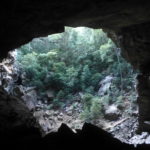
Most typical of limestone areas are abundant caves. Most are not tourist-friendly yet at Ankarana, but we could enter the huge gaping mouths of two caves, walking with flashlights for a while past old draperies and columns formed when carbonate still dripped through the porous limestone.
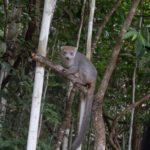
There two types of bats occupy cracks and holes in the limestone, chattering and squeaking till they emerge en masse at dusk to eat their fill of bugs. One dark passageway was quite challenging to maneuver, giving us another need to stay balanced on these rocks.
At some national parks in Madagascar, the wildlife is the draw; at others, the landscape takes priority. At Ankarana, the rare crowned lemur came up close to visit us; but the most memorable sight here and at Bemaraha was the rock.
(Also, for more pictures from Madagascar, CLICK HERE to view the slideshow at the end of the itinerary page.)


